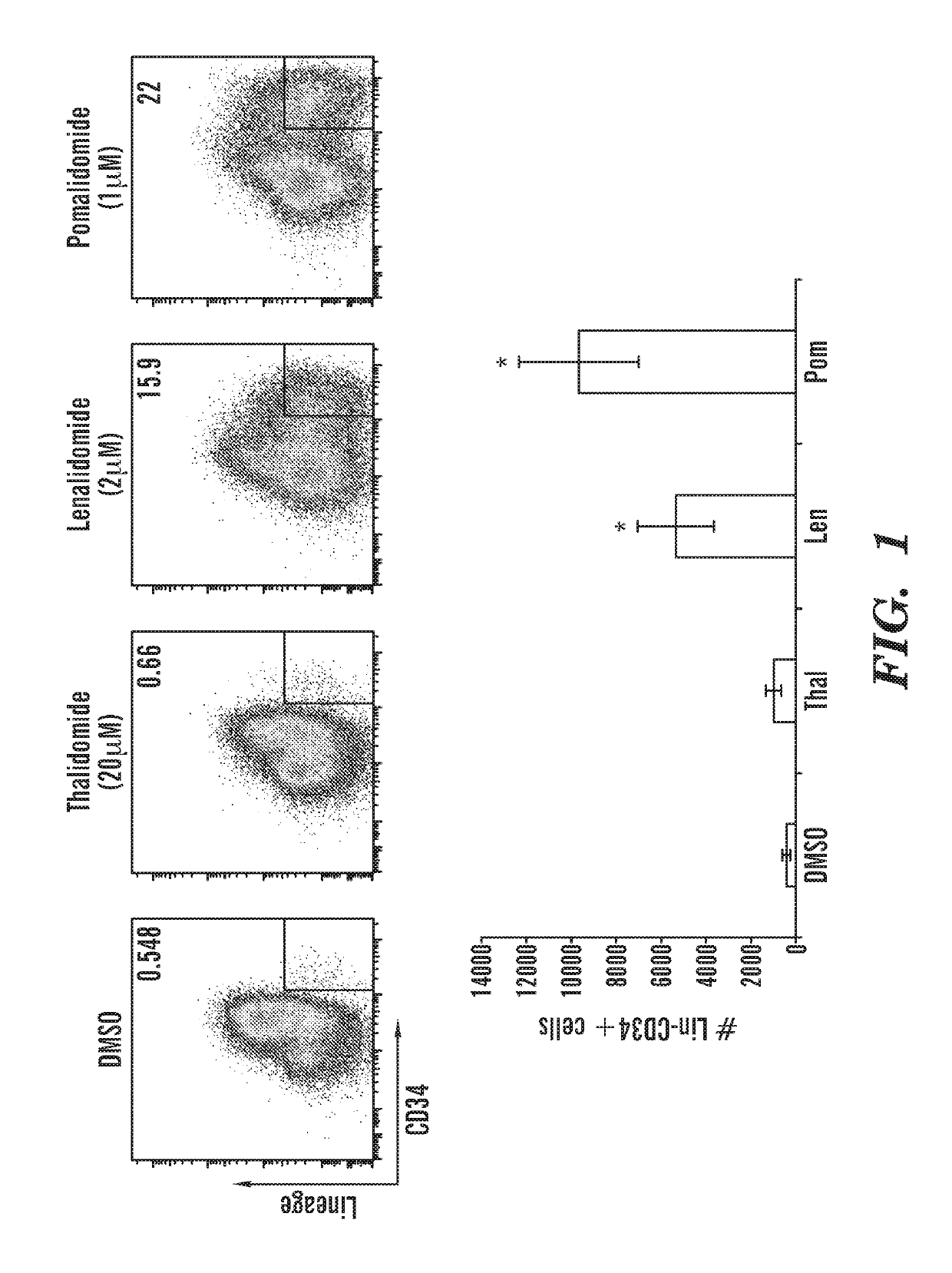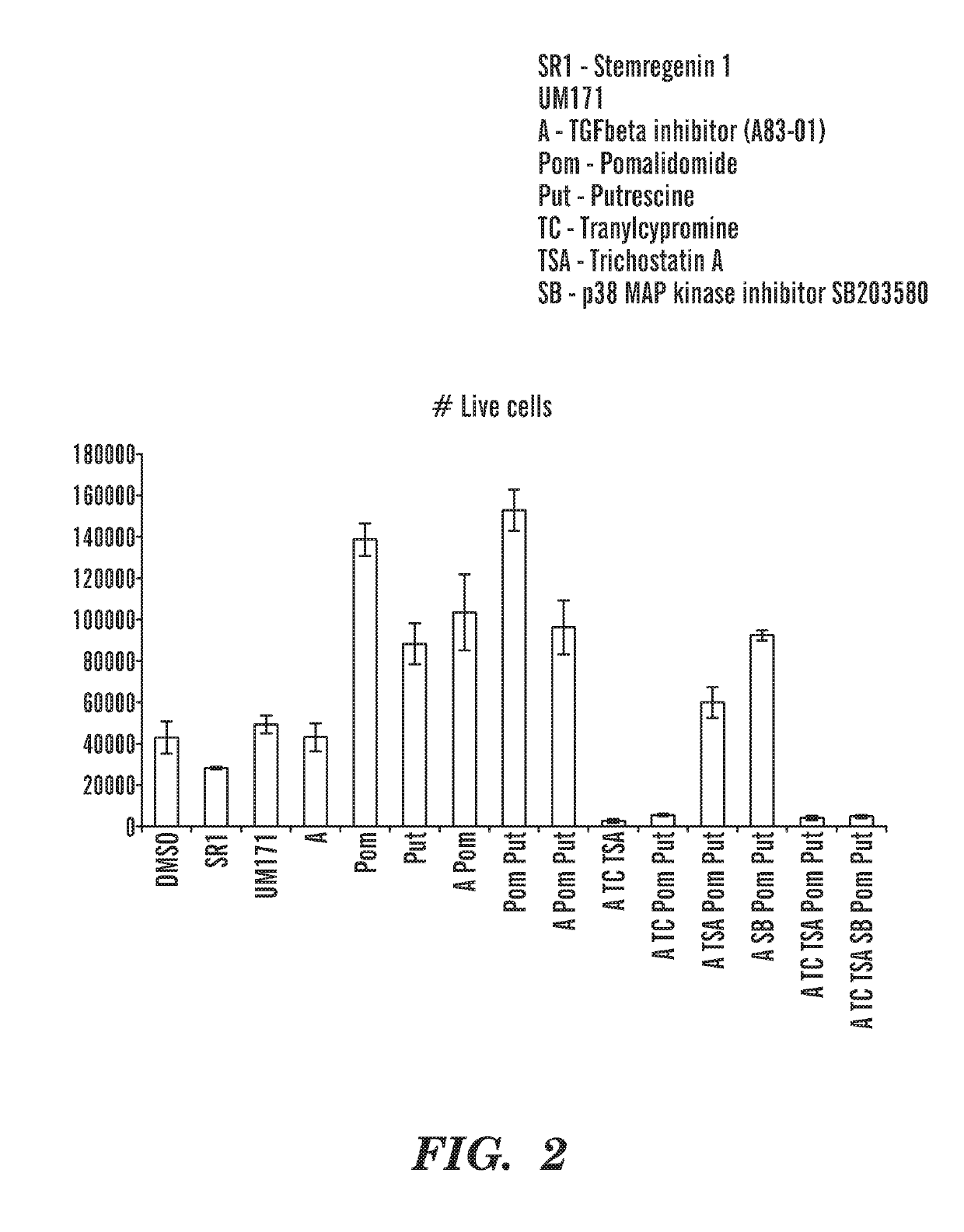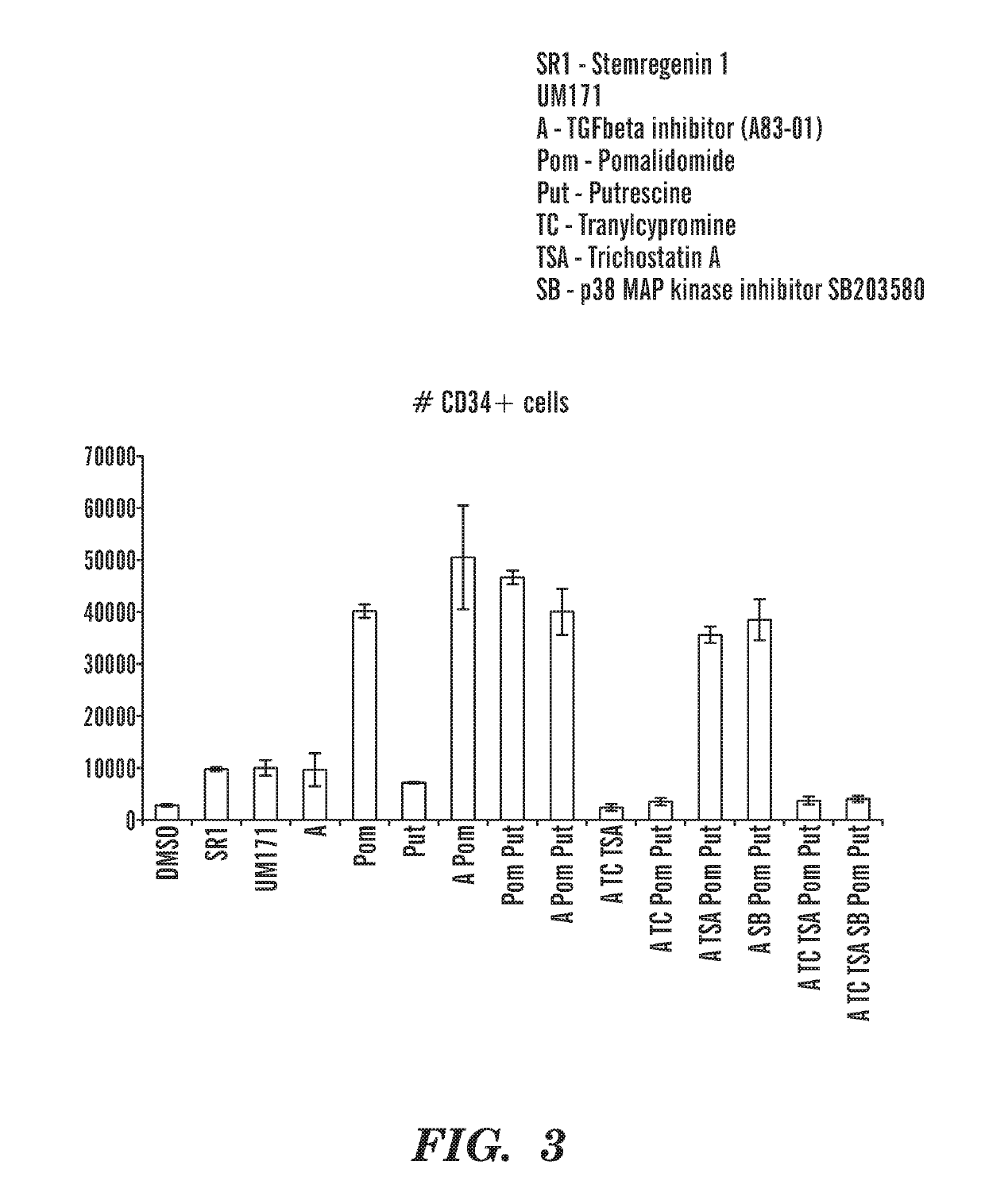Methods and compositions relating to hematopoietic stem cell expansion
a technology compositions, applied in the field of compositions and methods, can solve the problems of difficulty in obtaining sufficient numbers of hematopoietic stem cells, and achieve the effect of reducing the level of an ikaros family member transcription factor
- Summary
- Abstract
- Description
- Claims
- Application Information
AI Technical Summary
Benefits of technology
Problems solved by technology
Method used
Image
Examples
example 1
Cell Culture Protocol for the Expansion of CD34+ Cells Ex Vivo
[0959]Hematopoietic stem cells, such as CD34+ hematopoietic stem cells, can be expanded, enriched, and maintained ex vivo using the compositions and methods described herein. This example provides a sample protocol that can be used in conjunction with these compositions and methods.
[0960]On day 1, CD34 enriched cord blood cells (AllCells) are thawed, and 10,000 cells are plated per well (48 well tissue culture plate) in 300 μl of media composed of StemSpan SFEM II (Stemcell Technologies) supplemented with penicillin / streptomycin (100 U / ml, Gibco), hSCF(100 ng / ml), hTPO (100 ng / ml), hIL3 (100 ng / ml), hFLT3L (100 ng / ml), and various combinations of small molecules at the following final concentrations (all stock solutions were prepared with DMSO as the solvent): A83-01 (1 Tocris), Pomalidomide (2 μM, Selleckchem), UM171 (35 nM, ApexBio), Tranylcypromine hydrochloride (6 μM, Cayman Chemical), Trichostatin A (25 nM, Cayman Ch...
example 2
[0965]CD34+ cord blood cells were cultured in vitro in the presence of different combinations of compounds as described herein. The percentage and total number of Lin−CD34+and Lin− cells was increased (FIGS. 21; FIG. 22A-22B; FIG. 23A-23B) in the presence of POM, (pomalidomide); SR1(StemRegenin 1); A (A83-01), U (UM171); AP (A+POM); APU (A+POM+UM171) and APSR1 (A+POM+SR1). All conditions tested increase CD34+ cell number, which includes both HSCs and progenitor cells. The percentage and total numberof Lin−CD45RA−CD90+ HSCs was increased in the presence of POM; AP; APU; and APSR1 (FIG. 24, 25). The percentage of Lin−CD45RA−CD90+CD49f+EPCR+ HSCs was increased in the presence of POM; AP; APU; and APSR1 (FIG. 26, 27). Importantly, these cells retain immunophenotypic markers associated with HSCs and expand HSC numbers after twelve days of culture in vitro. As seen in the vehicle control cells (DMSO), these cells limited in number after twelve days of in vitro culture. Furthermore, the ex...
example 3
[0967]Transplantation assays were conducted to measure HSC function of human CD34+ cord blood cells expanded in the presence of various compounds and combinations thereof as described herein (FIGS. 29-38) herein. These figures demonstrate that the expanded HSCs function as they provide long-term multilineage (B cells, T cells, and myeloid cells) reconsistution of human cells in the xenotransplantation model. There were no adverse events noted during transplantation assays.
[0968]Culture in the presence of AP expands functional human hematopoietic stem cells (FIG. 39A-39B). The limit dilution assay measures the number of functional HSCs in the compound treated cells. This data demonstrates that we have a two-fold expansion in functional HSCs compared to fresh cells, indicating that AP expands HSCs. There were no adverse events noted in these assays.
PUM
| Property | Measurement | Unit |
|---|---|---|
| concentrations | aaaaa | aaaaa |
| volume | aaaaa | aaaaa |
| compositions | aaaaa | aaaaa |
Abstract
Description
Claims
Application Information
 Login to View More
Login to View More - R&D
- Intellectual Property
- Life Sciences
- Materials
- Tech Scout
- Unparalleled Data Quality
- Higher Quality Content
- 60% Fewer Hallucinations
Browse by: Latest US Patents, China's latest patents, Technical Efficacy Thesaurus, Application Domain, Technology Topic, Popular Technical Reports.
© 2025 PatSnap. All rights reserved.Legal|Privacy policy|Modern Slavery Act Transparency Statement|Sitemap|About US| Contact US: help@patsnap.com



